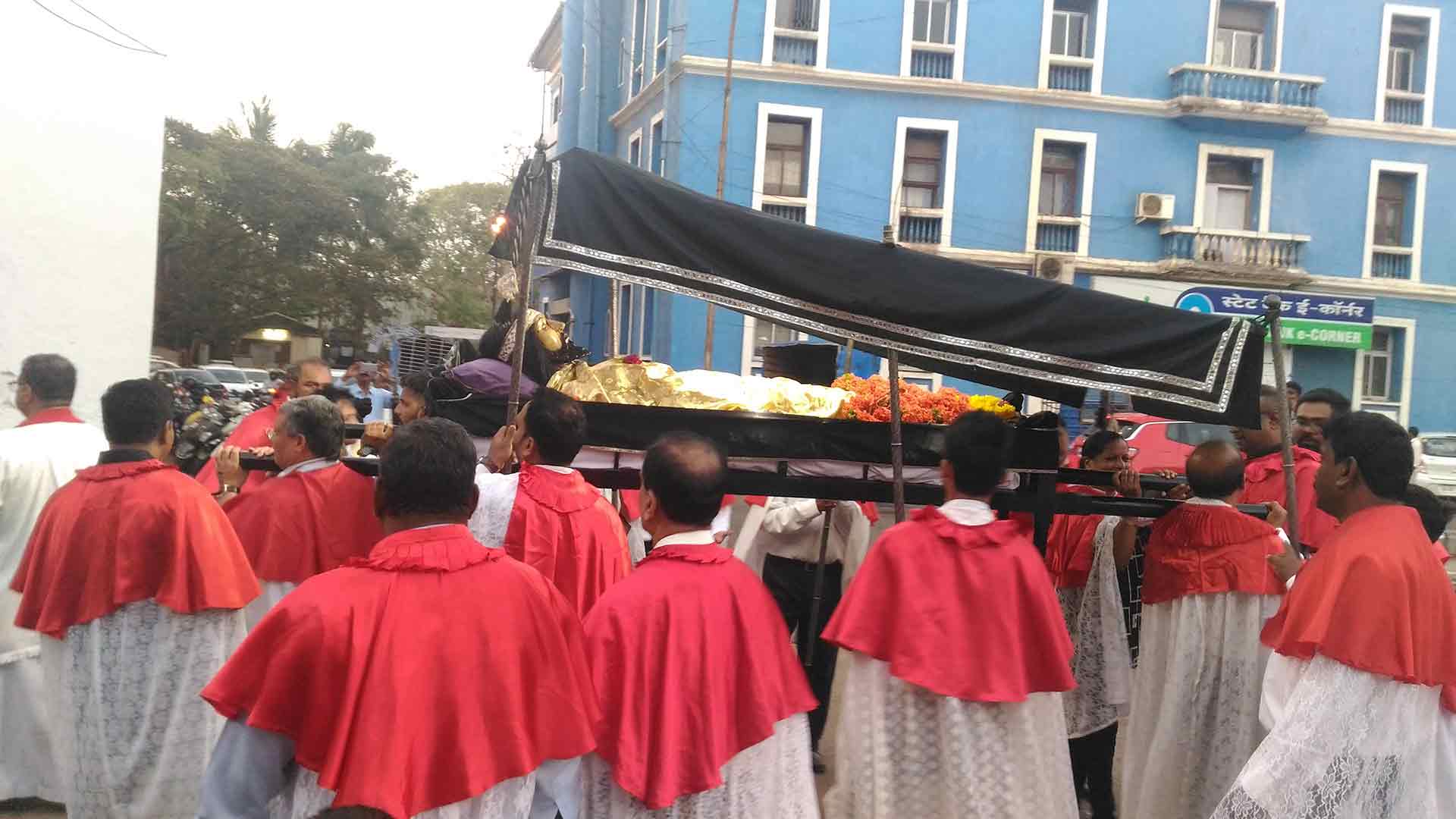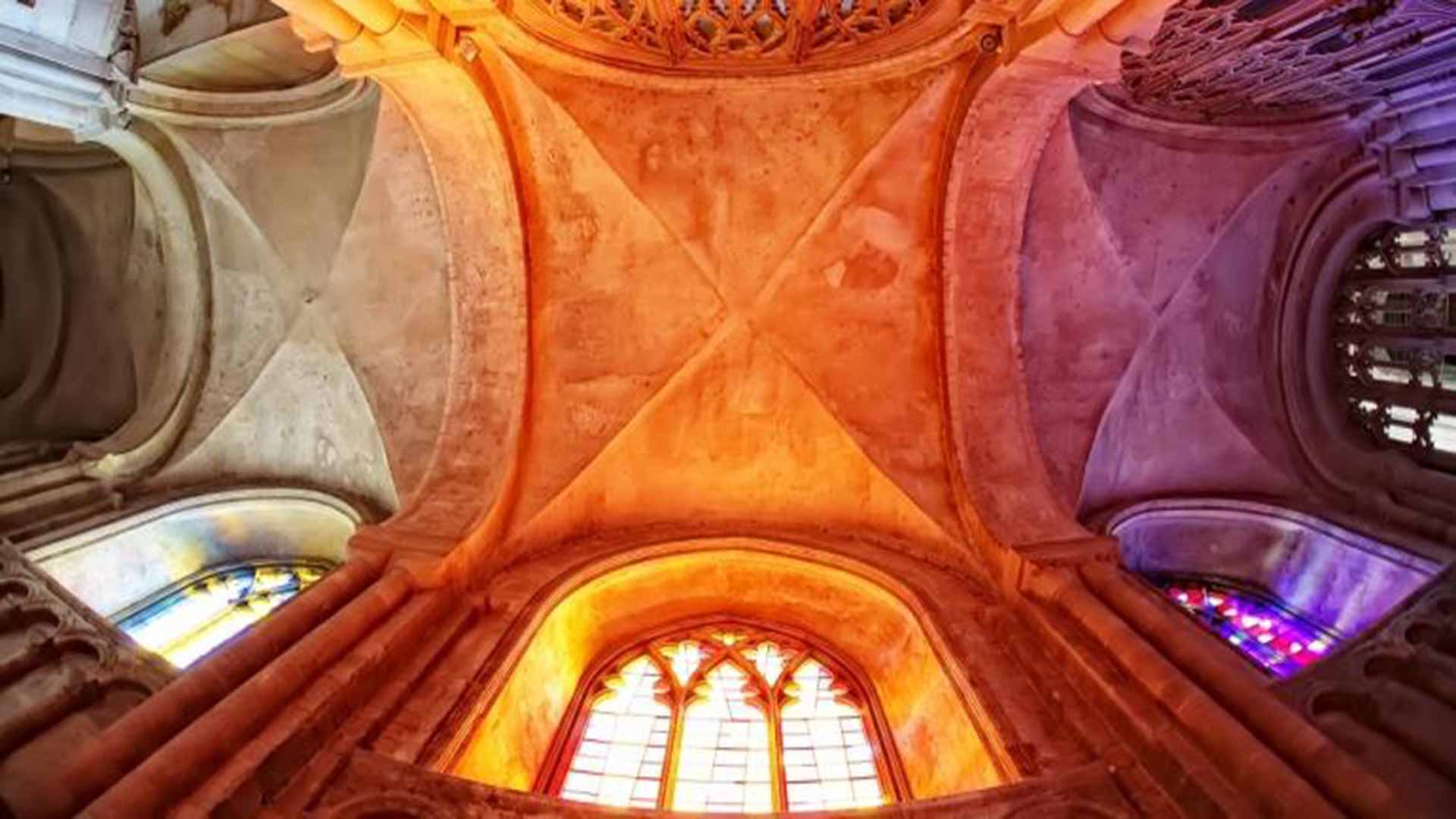Good Friday Procession in Panjim
The 3 o’clock, Good Friday service at the city church of the Immaculate Conception comprises a poignant Crucifixion tableau.

Soon thereafter, a procession of Senhor Morto (Dead Lord) on an andor (black canopied wooden platform carrying a life-size statue of Our Lord who died on the Cross) starts off, with a statue of Our Lady in trail. It wends its way through the main thoroughfares (the church square, a section of 18th June, Pissurlencar, past Azad Maidan), making a major halt to pray at the chapel formerly attached to the mansion of a Portuguese noble family. The cavalcade then proceeds via M. G. Road and Dr D. R. de Sousa, past the Garcia de Orta Garden, and up the church stairway.
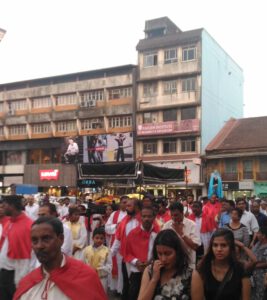
The pious march takes approximately 90 minutes. It is animated by five decades of the Marian rosary recited over speakers fitted at several points; and by Lenten hymns sung by a choir to the accompaniment of a brass band. The circuit is marked by over ten descansos (halts). At these points, penitents, all of them de rigueur, in funereal attire, flock to the two statues. Members of other religious faiths also pay their respects; many watch in awe or stand at attention (I noticed a policeman saluting).
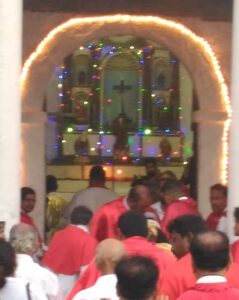
One such halt is at a quaint chapel traditionally called 'Capela de Dom Lourenço', located behind what is now the iconic Hotel Mandovi. In times past, the chapel was part of the manor belonging to Dom Lourenço de Noronha, a Portuguese nobleman, who had acquired a large estate in the then incipient city centre. After the palatial mansion was razed, the chapel was handed over to the care and possession of the city church. Alas, the venerable structure is in a state of disrepair.

On the said route, two Hindu families (Caculó and Neurencar) traditionally offer garlands. Businesses brighten up their establishments, or simply light candles and burn incense on the adjoining pavements.
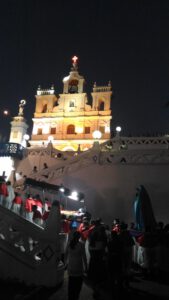
In a coda to the baroque event is a sermon (Sermão da Soledade de Maria) at a stair landing: here, from a balcony that serves as a makeshift pulpit, a priest extols the virtues of Mary and highlights her present solitude. The congregation listens in silence even while vehicle noises spoil the ambience.
The statues return to the church for final veneration. By 8 o’clock, they call it a night!
Lent, an irresistible balm for the soul
Haven’t we felt listless, not to say ill at ease, about Lent, sometime in our life? As a child, I tagged along with my parents to liturgical services that made little sense. Not surprisingly, on reaching the age of reason, I had to be cajoled into attending them. Then, suddenly, I got a break. I found motets, songs for the season, composed by Goa’s unnamed musicians of old, to be an absolute feast for the ears, alongside similar compositions by Bach, Palestrina and Mozart. I also discovered, quite ironically, that the Via Dolorosa in the balmy evening breeze and to the chirping of birds in the woods of Altinho was not so dolorous after all!
Much as I delighted in those two little secrets, at one point I felt an interior dryness, a sense of futility, as though I were trudging a wasteland. The saving grace came from my grandmother’s exemplary life, which was far better than precept. Likewise, my parents’ quiet commitment to the Faith, amidst their daily toil and moil, provided important insights into the valley of tears we live in. And Scripture wrapped it up so beautifully: “Look at the birds of the air: they neither sow nor reap nor gather into barns, and yet your heavenly Father feeds them. Are you not of more value than they?” (Mt. 6: 26)
Clearly, the rituals that I had cheekily dismissed yesterday changed into victuals for the spirit today. And as another season of Lent comes round, I know just how it will turn out, how they will sustain me…. Beginning Ash Wednesday, I will go to church more often than usual, for Mass and Stations of the Cross. On a hopefully bright and festive Palm Sunday morning, I will feel cheery. Yet, by evening, my mood will change hugely – as it always did when I witnessed the spectacle of the full-size statue of the Suffering Lord emerge from the immaculately white church of the zigzag stairway, to join the faithful clad in dark shades, in a penitential procession through the streets of the capital.
What a poignant start to the Holy Week! It’s the last lap of an all-embracing spiritual journey. You’ll probably catch me shaking off distractions on holy Monday, Tuesday and Wednesday. Through the rest of the week, I will be all eyes and ears to the Mystery of mysteries replayed in the Paschal Triduum, from the moment of that bittersweet Last Supper on Maundy Thursday through excruciating Good Friday and triumphant Easter Sunday. Soon, the week’s darkness will give way to light and its drabness will translate into loud proclamations. The faithful will be beside themselves, singing in an unending refrain: “No one can give to me that peace that my Risen Lord, my Risen King can give.”
It pays to be fools for Christ; Chesterton’s “Donkey” is proof that there will be no regrets. The thought of self-privation, which had bugged me when young, doesn’t assail me. I find it easier now to give up a favourite food or a much-loved pastime. Penance and sacrifice, besides fostering self-discipline and tempering our desires, are game-changers. They help to boost one’s spiritual life and improve our physical health. We are led to find ways and means to step up our knowledge of our faith; perform acts of kindness and mercy, wherever we may be; pray for others, and clean ourselves inside out by means of a holy confession. Before long, we learn to slow down, while the rest of the world is in a rat race, enjoying in a fool’s paradise.
It is reassuring to think of Lent as pilgrimage toward the profound mystery of the passion, death and resurrection of Jesus Christ. Benedict XVI says it is also “a privileged time of interior pilgrimage toward Him who is the fount of mercy. It is a pilgrimage in which He himself accompanies us through the desert of our poverty, sustaining us on our way toward the intense joy of Easter.” How, then, can we be listless or ill at ease at Lent when an irresistible balm for our soul is at hand?
(First published in The Times of India, Panjim, 1 March 2017)
